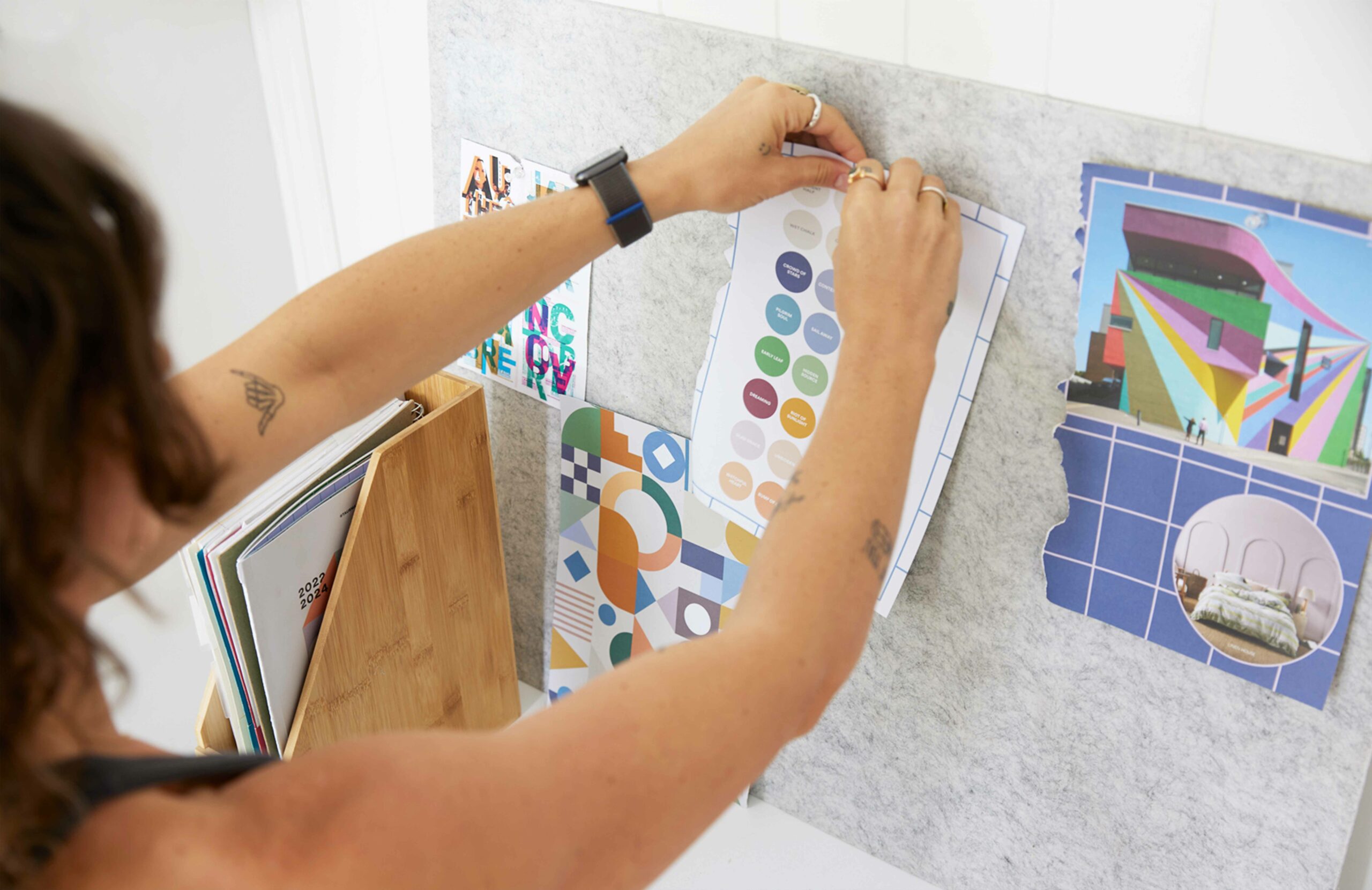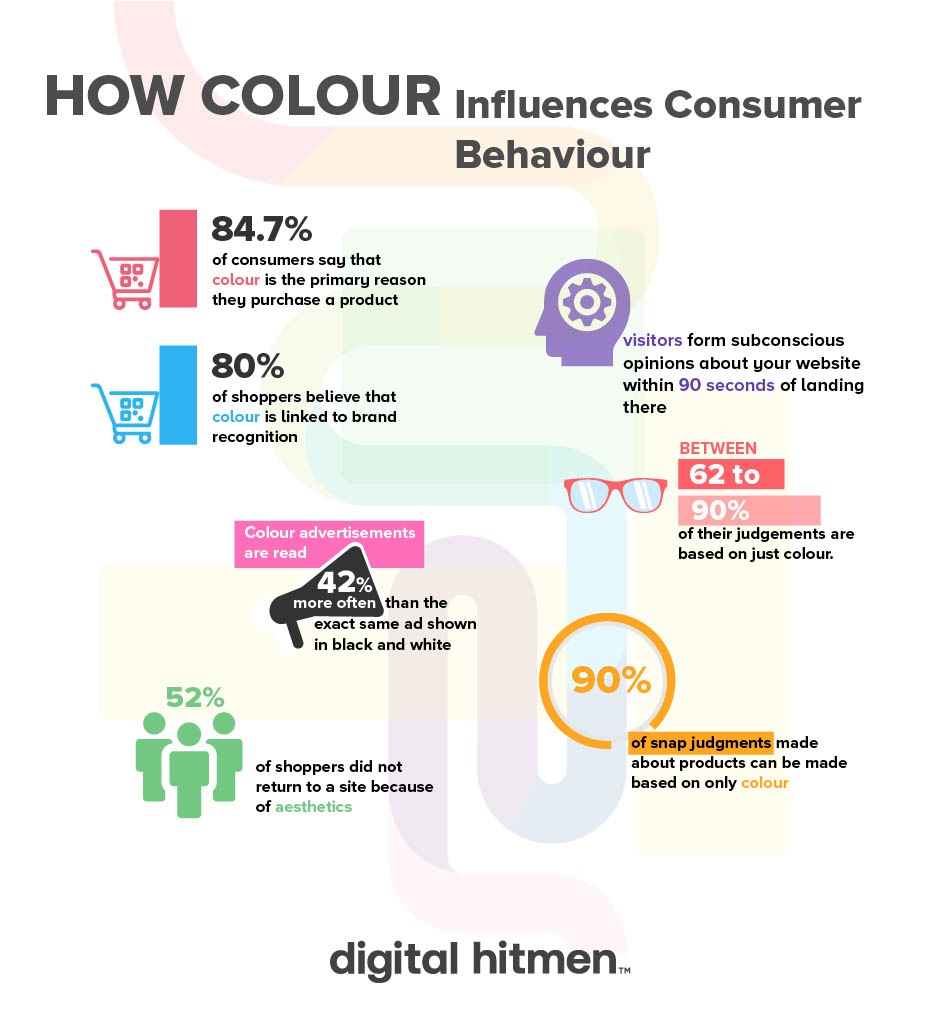Because your website is your storefront and calling card, you must have an aesthetically pleasing site that grabs attention and also makes visitors feel welcome. As you may imagine, there are scores of crucial elements that go into making a website that you will be proud of, and your customers will love.
Graphic design elements are vital when you are planning your site. In addition to fonts and images, you must pay careful attention to your use of website colour schemes.
If you have not given much thought to the importance of colour in advertising, you need to consider the psychology of colour and how by making the right choices, you can watch your clicks, and sales go through the roof.
Why is colour important?
Choosing a suitable advertising colour scheme will allow you to impact your audience on several levels. Humans use colour as a way to interpret our surroundings. Our minds link our emotions to colours and colour combinations. For example, sports fans react differently to various colours.
Colour also influences how we feel about particular objects and our decision-making. A study looking at the use of colour in marketing uncovered some surprising statistics.
- 84.7% of consumers say that colour is the primary reason they purchase a product
- 80% of shoppers believe that colour is linked to brand recognition
- Visitors form subconscious opinions about your website within 90 seconds of landing there. Between 62-90% of their judgements are based on just colour.
- Colour advertisements are read 42% more often than the same ad shown in black and white
- 52% of shoppers did not return to a site because of aesthetics
- 90% of snap judgements made about products can be made based on only colour
What does colour accomplish?
Colour selection matters and there are numerous things colour achieves.
- Colour enhances your overall website appeal
- Colour changes brand perception
- Colour increases brand recognition by 80%
- Colour is a primary influencing factor for 85% of consumers
- Colour improves customers’ memories
How do I start using colour as part of my marketing strategy?
A wise first step in building colour into your marketing strategy is to make sure you appeal to the correct demographic with your chosen colours. This is where the psychology of colour is a vital component in your website colour scheme.
Use the data you have about your customers to get an idea of which colours will have the best impact.
Here are the demographics you may concentrate on when determining your focus.
- Gender – The gender assignment of colour has been discussed and debated for decades. However, this is much more than blue for boys and pink for girls. When you study the outcomes of various surveys, you can get an overall picture of the most appealing (and least appealing) colours. If either men or women dominate your customer base, consider adjusting your colour choices accordingly. A notable study published by Kissmetrics offers the following insights.
- Blue is favoured by 57% of men and 35% of women. This points to a positive response across the board
- Green and red share gender preferences nearly equally, making them good choices for a demographic made up of both genders
- Purple is favoured by 23% of women and 0% of men. The polarising nature of the colour lends itself to use by companies with a predominantly female demographic.
- Age – If your product or service lends itself to a specific age range, you would likely benefit from a closer look at colours that appeal to your age group.
- Consumers who are under 30 years old are drawn to bold primary colours with high-contrast pairings
- The 30 to 55-year-old age range responds better to lighter tones
- Your customers over 55 tend to prefer pastel colours
- Studies also show consistency with colours people dislike
- Culture – If you have an international audience, you should invest in careful research into colour meanings. Various parts of the world, as well as different nations, view colours differently. For example, blue is a positive hue in the UK and North America. However, in Iran and other areas, blue is the symbolic colour for mourning.
What can I expect to gain from the correct use of colour?
- The right colour will display your brand’s personality. You should use colour to support the individuality you want to portray. Trying to align with stereotypical colour associations will feel forced at best and disingenuous at worst. You will need to define the personality you wish to display and then move on to the colours that fit.
- The right colour will appeal to your demographic and be memorable. Moving beyond the stereotypical use of colour is important because consumers feel that colour that seems ‘appropriate’ for the brand is vital.
- The right colour will make your brand stand out from the crowd- Many experts believe that you should go to great lengths to differentiate your company from competitors by using colour. This idea goes hand in hand with the fact that consumers prefer instantly recognisable logos and colour schemes.
- Using contrasting shades can help with call-to-action buttons because they enhance the visibility of the icons. You likely already know that visitors to your site will not spend more than a moment scanning for a call to action icon. Make the actions easy to find with standout colours. Choose a single colour on your site to function as the designated action colour for the most significant impact.
Impressions colours give
No hard and fast rule defines various meanings and impressions we get from viewing different colours. However, there is reliable data that speaks to how colours impact us.
- Red – An energetic colour often used in clearance advertisements, red carries a sense of excitement and accelerates the heartbeat.
- Orange – Often, orange is seen as aggressive, and it makes a great call to action colour
- Yellow – A youthful and optimistic colour, yellow is an excellent shade to attract the attention of those who are just browsing
- Green – Green is the easiest colour for the eyes to process and often is associated with relaxation and nature. Green is also associated with wealth
- Black – Generally, black is a power colour. It is a hallmark of luxury advertisements
- Blue – The colour blue generates a sense of trust and relaxation. It is also associated with stability and security
- Pink – Typically, pink is a part of romantic or feminine campaigns
- Purple – Associated with royalty, purple often appears in marketing beauty and anti-aging products

How to use colour to increase your conversion rate
- Analyse the Colour Selection You are Using on Your Website -You would likely do more harm than good if you were to scrap everything without looking at what you have now. You need to understand the message your site is sending and how it lines up with the way you want to present your brand. To do this, you can use a chart like this one by Help Scout. However, you may be able to get a more precise understanding by working with an expert.
- Look for Contrasting Colours – Creating visual impact is a good goal when you are starting to work with brand colour psychology. Also, be sure to include the colour you are using as your site’s action colour.
- Perform a Split Test to See Which Choices are Favoured by Consumers – By conducting a split test, you will discover which colour options will get you the best results.
Need help with your marketing campaigns?
While there may not be one definitive best colour palette for a website, choosing a suitable colour scheme is vital to your success. In the highly competitive digital marketing world, you need an excellent website and a vibrant online presence to make an impact.
If you understand the importance of this but lack the time, staff, or expertise necessary to build a dynamic website, do not hesitate to contact us. Our team of experts will work with you to understand your vision and bring it to life in a spectacular fashion.







